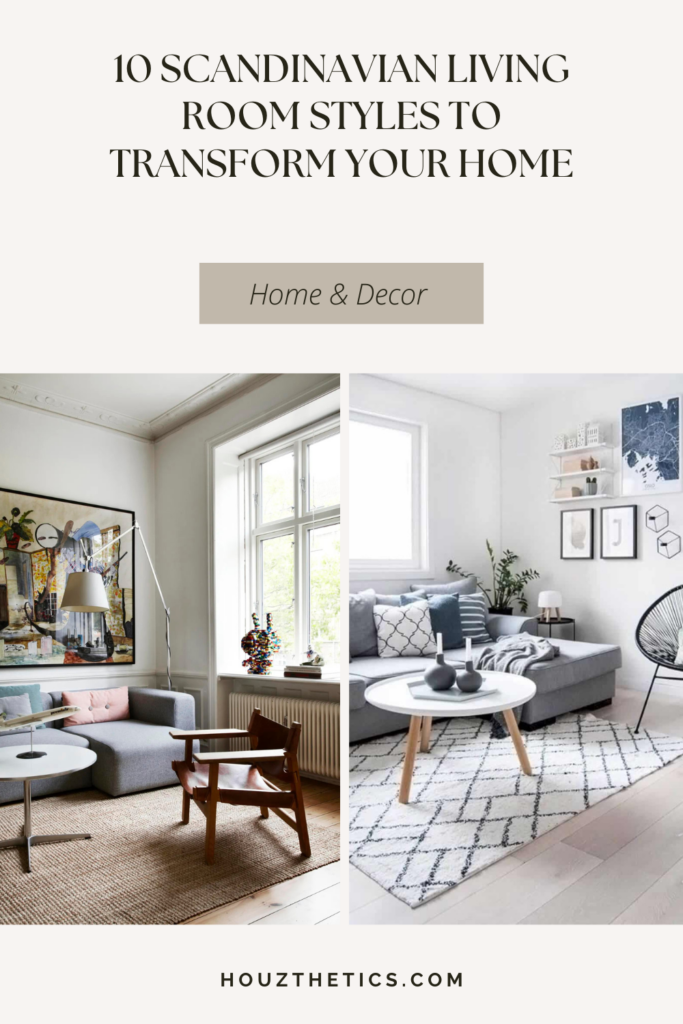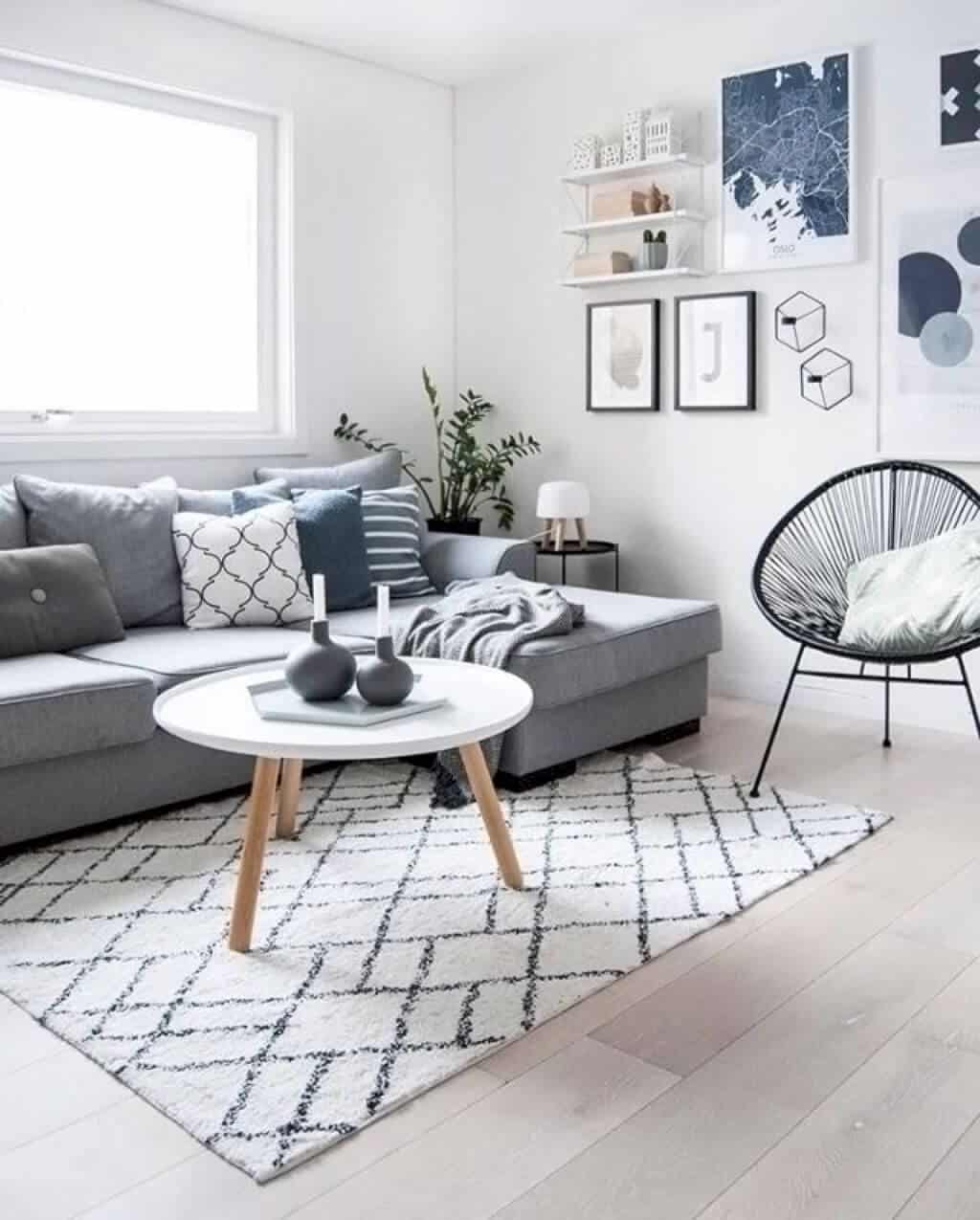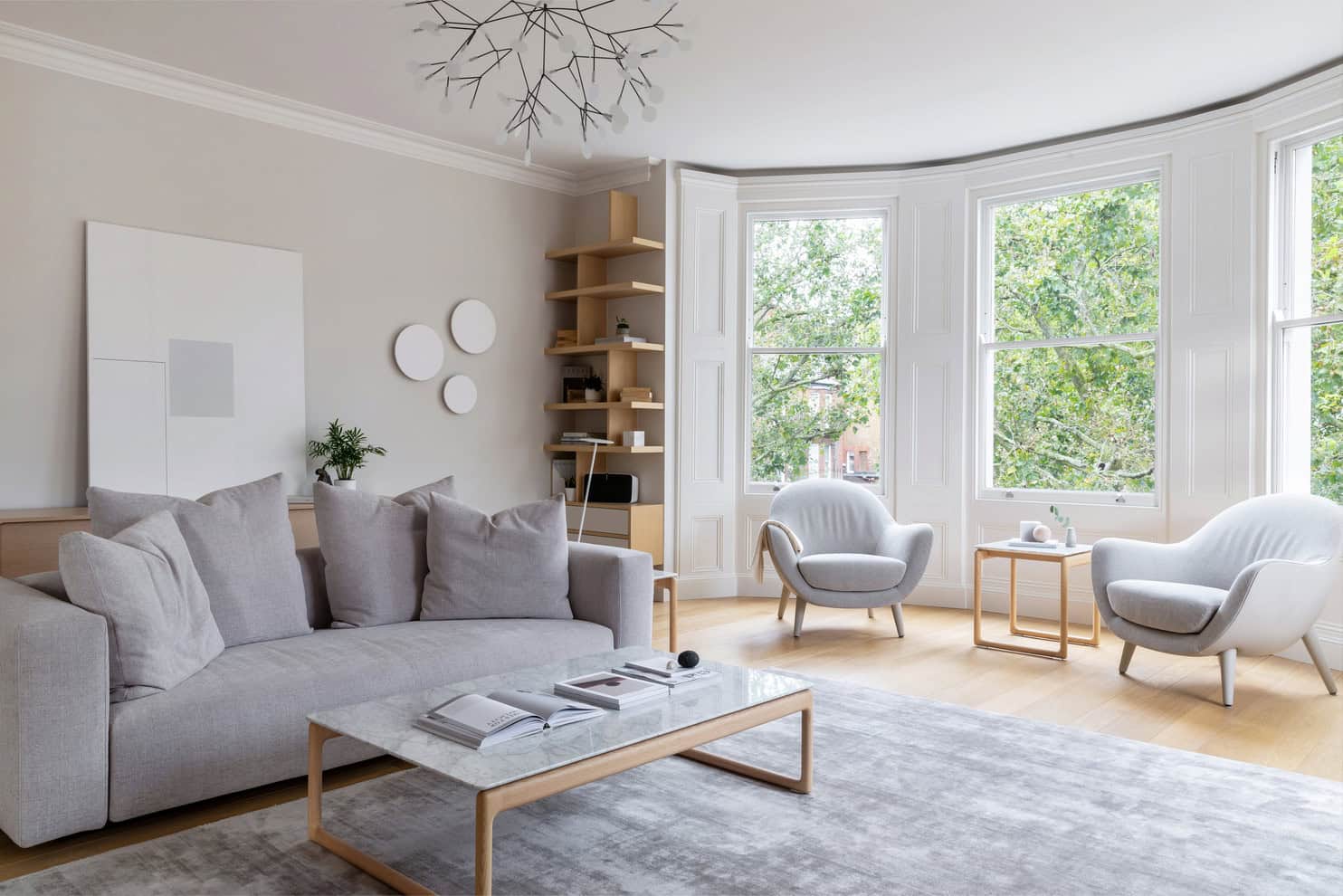
Scandinavian living room styles embody a minimalist and functional design aesthetic, prioritizing natural light, neutral colors, and comfortable furnishings. This style originated in the Nordic countries during the early 20th century and has gained global popularity for its simplicity, elegance, and functionality.
Scandinavian living room styles are characterized by their emphasis on natural elements, sustainable materials, and clean lines. The use of light colors, such as white, beige, and gray, creates a sense of spaciousness and brightness, while pops of color can be added through textiles, artwork, or accessories. Furniture pieces are typically simple and functional, with a focus on comfort and durability.
The popularity of Scandinavian living room styles lies in their ability to create a warm, inviting, and stylish space. The emphasis on natural light and neutral colors helps to create a calming and serene atmosphere, while the functional furniture and sustainable materials make the space both practical and environmentally friendly. Scandinavian living room styles are a great choice for those who appreciate simplicity, functionality, and a connection to nature.
Scandinavian Living Room Styles
Scandinavian living room styles are characterized by their simplicity, functionality, and use of natural elements. Key aspects of Scandinavian living room styles include:
- Natural light: Scandinavian living rooms are typically filled with natural light, which creates a bright, airy, and inviting atmosphere.
- Neutral colors: Neutral colors, such as white, beige, and gray, are commonly used in Scandinavian living rooms to create a sense of spaciousness and serenity.
- Functional furniture: Scandinavian furniture is designed to be both stylish and functional. Pieces are typically simple, clean-lined, and made from high-quality materials.
- Sustainable materials: Scandinavian living room styles often incorporate sustainable materials, such as wood, stone, and recycled glass, to create a more environmentally friendly space.
- Textiles: Textiles, such as throws, pillows, and rugs, are used to add pops of color and texture to Scandinavian living rooms.
- Plants: Plants are often used in Scandinavian living rooms to bring a touch of nature indoors and create a more inviting atmosphere.
- Accessories: Accessories, such as candles, vases, and artwork, are used sparingly in Scandinavian living rooms to avoid clutter and maintain a sense of simplicity.
These key aspects come together to create a Scandinavian living room style that is both stylish and functional. Scandinavian living rooms are designed to be comfortable, inviting, and sustainable, and they can be easily adapted to fit any taste or budget.

Natural light
In Scandinavian living room styles, natural light plays a crucial role in creating a sense of spaciousness, warmth, and well-being. Scandinavian countries experience long, dark winters, so maximizing natural light is essential for creating a comfortable and inviting living space. Large windows and skylights are common features in Scandinavian living rooms, allowing natural light to flood in and brighten the space.
- Improved mood and well-being: Natural light has been shown to improve mood, boost energy levels, and reduce stress. In Scandinavian living rooms, the abundance of natural light contributes to a positive and inviting atmosphere, making it a great place to relax and unwind.
- Enhanced sense of space: Natural light can make a room feel more spacious and airy. In Scandinavian living rooms, the use of large windows and skylights helps to create a sense of openness and flow, making the space feel larger than it actually is.
- Reduced energy consumption: By maximizing natural light, Scandinavian living rooms can reduce the need for artificial lighting, saving energy and reducing environmental impact.
- Connection to nature: Natural light helps to connect us with the outdoors, even when we are inside. In Scandinavian living rooms, the large windows and skylights provide views of the surrounding nature, bringing the outside in and creating a sense of tranquility.
The use of natural light in Scandinavian living room styles is a key factor in creating a space that is both stylish and functional. By maximizing natural light, Scandinavian living rooms create a bright, airy, and inviting atmosphere that is both comfortable and energy-efficient.

Neutral colors
In Scandinavian living room styles, neutral colors play a crucial role in creating a sense of spaciousness, serenity, and timeless elegance. Neutral colors reflect light well, making rooms feel larger and brighter. They also create a sense of calm and tranquility, which is essential for creating a relaxing and inviting living space.
- Enhanced sense of space: Neutral colors can make a room feel more spacious and airy. In Scandinavian living rooms, the use of white, beige, and gray helps to create a sense of openness and flow, making the space feel larger than it actually is. This is especially important in smaller living rooms, where neutral colors can help to make the space feel more comfortable and less cluttered.
- Improved mood and well-being: Neutral colors have been shown to have a positive impact on mood and well-being. In Scandinavian living rooms, the use of neutral colors helps to create a calming and serene atmosphere, which is conducive to relaxation and stress reduction. Neutral colors can also help to improve sleep quality, as they create a more restful and peaceful environment.
- Versatility and flexibility: Neutral colors are extremely versatile and can be paired with a variety of other colors and patterns. This makes them a great choice for Scandinavian living rooms, which are often characterized by their mix of different textures and materials. Neutral colors can also be easily changed or updated, making them a great choice for those who like to change their dcor frequently.
- Timeless elegance: Neutral colors are timeless and never go out of style. This makes them a great choice for Scandinavian living rooms, which are designed to be both stylish and functional. Neutral colors will never look dated or out of place, so you can enjoy your Scandinavian living room for years to come.
The use of neutral colors in Scandinavian living room styles is a key factor in creating a space that is both stylish and functional. Neutral colors help to create a sense of spaciousness, serenity, and timeless elegance, making them a great choice for any living room.
/cocolapinescandinavianlivingroom-c602a303414341fb932f2d31e8769699.jpeg)
Functional furniture
Functional furniture is a key component of Scandinavian living room styles. Scandinavian furniture is designed to be both stylish and functional, with a focus on simplicity, clean lines, and high-quality materials. This combination of style and functionality creates a living space that is both comfortable and inviting.
There are several reasons why functional furniture is so important in Scandinavian living room styles. First, Scandinavian living rooms are often small, so it is important to choose furniture that is both stylish and space-saving. Second, Scandinavian countries experience long, dark winters, so it is important to choose furniture that is comfortable and inviting, as people will be spending a lot of time indoors. Finally, Scandinavians value sustainability, so they prefer furniture that is made from high-quality materials and built to last.
Here are some examples of functional furniture that is commonly used in Scandinavian living room styles:
- Sofas: Scandinavian sofas are typically simple and clean-lined, with a focus on comfort. They are often made from high-quality materials, such as leather or wool, and they are built to last.
- Chairs: Scandinavian chairs are also typically simple and clean-lined, with a focus on comfort and functionality. They are often made from wood or metal, and they are often designed to be stackable or foldable, to save space.
- Tables: Scandinavian tables are typically simple and clean-lined, with a focus on functionality. They are often made from wood or metal, and they are often designed to be extendable or adjustable, to accommodate different needs.
- Storage units: Scandinavian storage units are typically simple and clean-lined, with a focus on functionality. They are often made from wood or metal, and they are often designed to be modular, so that they can be configured to fit any space.
Functional furniture is an essential component of Scandinavian living room styles. By choosing furniture that is both stylish and functional, you can create a living space that is both comfortable and inviting.

Sustainable materials
Sustainability is a key component of Scandinavian living room styles. Scandinavians value environmental responsibility, and they prefer to use sustainable materials in their homes whenever possible. Sustainable materials are those that are produced in a way that minimizes environmental impact, such as by using recycled materials or sustainably harvested wood.
- Reduced environmental impact: Sustainable materials have a lower environmental impact than traditional materials. For example, recycled glass uses less energy to produce than new glass, and sustainably harvested wood comes from forests that are managed in a way that minimizes environmental damage.
- Improved indoor air quality: Sustainable materials can also improve indoor air quality. For example, wood is a natural air purifier, and it can help to reduce levels of harmful pollutants in the air.
- Increased durability: Sustainable materials are often more durable than traditional materials. For example, sustainably harvested wood is more resistant to rot and decay than wood from unsustainable sources.
- Aesthetic appeal: Sustainable materials can be just as aesthetically pleasing as traditional materials. In fact, many people find that sustainable materials have a unique and natural beauty that is not found in traditional materials.
By using sustainable materials in Scandinavian living room styles, you can create a space that is both stylish and environmentally friendly. Sustainable materials can help to reduce your environmental impact, improve indoor air quality, and create a more durable and beautiful living space.

Textiles
Textiles play a vital role in Scandinavian living room styles, adding pops of color, texture, and warmth to the space. These textiles are often made from natural materials, such as wool, cotton, and linen, which contributes to the overall comfort and sustainability of the space. The use of textiles in Scandinavian living rooms is not only for aesthetic purposes but also for practical reasons.
One of the key functions of textiles in Scandinavian living rooms is to add color and pattern to the space. Scandinavian living rooms are often characterized by their neutral color palettes, so textiles provide a great opportunity to add pops of color and create a more vibrant and inviting atmosphere. Textiles can also be used to add pattern and interest to the space, creating a more visually dynamic and stimulating environment.
In addition to adding color and pattern, textiles can also be used to add texture to Scandinavian living rooms. The use of different textures in a space can create a more tactile and inviting atmosphere. For example, a soft and fluffy throw can add a sense of comfort and coziness to a space, while a rough and textured rug can add a more rustic and organic feel. By combining different textures in a Scandinavian living room, you can create a space that is both visually appealing and tactilely stimulating.
Textiles are also an important part of Scandinavian living rooms because they can be used to create a more personal and inviting space. For example, a throw blanket can be draped over a sofa to create a more cozy and inviting atmosphere, while a rug can be used to define a seating area and make the space feel more intimate. By adding personal touches through textiles, you can create a Scandinavian living room that is both stylish and comfortable.

Plants
The use of plants in Scandinavian living room styles is a natural extension of the Scandinavian design philosophy, which emphasizes a connection to nature and the use of natural materials. Plants bring a touch of the outdoors into the home, creating a more inviting and relaxing atmosphere. They also have several other benefits, including improving air quality, reducing stress, and boosting creativity.
- Improved air quality: Plants help to improve air quality by removing toxins and pollutants from the air. This is especially important in Scandinavian countries, where winters are long and people spend a lot of time indoors. Studies have shown that plants can remove up to 87% of toxins from the air, making them a great way to improve the health and well-being of your family.
- Reduced stress: Plants have been shown to reduce stress and anxiety. This is because they create a calming and relaxing atmosphere. Studies have shown that people who are exposed to plants have lower levels of stress hormones, such as cortisol. Plants can also help to reduce blood pressure and heart rate.
- Boosted creativity: Plants have been shown to boost creativity and problem-solving skills. This is because they create a more stimulating and inspiring environment. Studies have shown that people who are exposed to plants are more creative and productive. Plants can also help to improve focus and concentration.
In addition to these benefits, plants can also add a touch of color and personality to your Scandinavian living room. They can be used to create a variety of different looks, from a lush and tropical oasis to a more minimalist and modern space. No matter what your style, there is sure to be a plant that is perfect for your Scandinavian living room.

Accessories
Accessories play an important role in Scandinavian living room styles, as they can add personality and style to a space. However, Scandinavian design emphasizes simplicity and functionality, so accessories are used sparingly to avoid creating a cluttered or overwhelming environment.
- Purpose and Role
Accessories in Scandinavian living rooms serve several purposes. They can be used to add pops of color, texture, and pattern to a space. They can also be used to create a more personal and inviting atmosphere, by displaying cherished objects or artwork that reflects the homeowner’s personality and interests. - Types and Examples
Common types of accessories used in Scandinavian living rooms include candles, vases, throws, pillows, and artwork. Candles create a warm and inviting atmosphere, while vases can be used to display fresh flowers or greenery. Throws and pillows add a touch of comfort and coziness, while artwork can add a personal touch and reflect the homeowner’s style. - Placement and Arrangement
Accessories should be placed and arranged carefully in Scandinavian living rooms to avoid creating clutter. One way to do this is to use the “less is more” approach, and only display a few key pieces. Another way to avoid clutter is to use vertical space, such as by hanging artwork on the walls or using shelves to display objects. - Balance and Harmony
When choosing and arranging accessories for a Scandinavian living room, it is important to consider balance and harmony. This means choosing pieces that complement each other in terms of color, texture, and style. It is also important to distribute accessories evenly throughout the space, to avoid creating a cluttered or unbalanced look.

FAQs about Scandinavian Living Room Styles
Scandinavian living room styles have gained popularity for their simplicity, functionality, and use of natural elements. They create a serene and inviting atmosphere that is both stylish and comfortable. However, there are some common questions and misconceptions about Scandinavian living room styles that we will address in this FAQ section.
Question 1: What are the key characteristics of Scandinavian living room styles?
Scandinavian living room styles are characterized by their emphasis on natural light, neutral colors, functional furniture, sustainable materials, and the use of textiles, plants, and accessories to add pops of color and texture.
Question 2: Why is natural light so important in Scandinavian living room styles?
Natural light is important in Scandinavian living room styles because it creates a bright, airy, and inviting atmosphere. Scandinavian countries experience long, dark winters, so maximizing natural light is essential for creating a comfortable and relaxing space.
Question 3: What types of furniture are typically used in Scandinavian living room styles?
Scandinavian furniture is typically simple, clean-lined, and made from high-quality materials such as wood, leather, and wool. Furniture pieces are often designed to be both stylish and functional, with a focus on comfort and durability.
Question 4: Why is sustainability important in Scandinavian living room styles?
Sustainability is important in Scandinavian living room styles because Scandinavians value environmental responsibility. Sustainable materials, such as wood, stone, and recycled glass, are used to create a more environmentally friendly space. Sustainable materials also have a lower environmental impact, improved indoor air quality, and increased durability.
Question 5: How can I incorporate Scandinavian living room styles into my own home?
To incorporate Scandinavian living room styles into your own home, start by focusing on natural light, neutral colors, and functional furniture. Add pops of color and texture with textiles, plants, and accessories. Choose sustainable materials whenever possible, and don’t be afraid to experiment with different combinations of furniture and decor to create a space that is both stylish and comfortable.
Question 6: Are Scandinavian living room styles only suitable for large, modern homes?
No, Scandinavian living room styles can be adapted to homes of all sizes and styles. The key is to focus on the core principles of simplicity, functionality, and natural elements, and to incorporate them into your own space in a way that works for you.
By following these tips, you can create a Scandinavian living room style that is both stylish and functional, and that reflects your own personal taste.
Conclusion
Scandinavian living room styles are characterized by their simplicity, functionality, and use of natural elements. They create a serene and inviting atmosphere that is both stylish and comfortable. Key elements of Scandinavian living room styles include natural light, neutral colors, functional furniture, sustainable materials, and the use of textiles, plants, and accessories to add pops of color and texture.
By following the tips outlined in this article, you can create a Scandinavian living room style that is both stylish and functional, and that reflects your own personal taste. Scandinavian living room styles are a great choice for those who appreciate simplicity, functionality, and a connection to nature.
